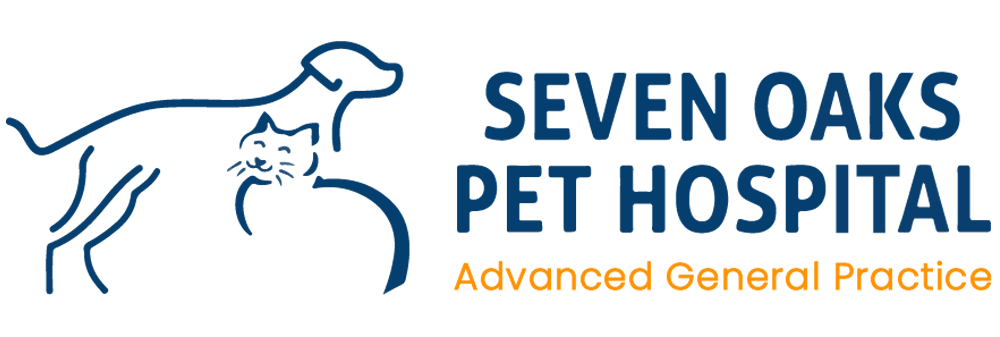Tibial Tuberosity Advancement (TTA Surgery)
To download and print this information, please click here.
The most common knee injury in the dog is rupture of the Cranial Cruciate Ligament (CCL), also frequently referred to as the Anterior Cruciate Ligament (ACL). This injury can occur at any age and in any breed, but most frequently occurs in middle-aged, overweight, medium to large breed dogs. This ligament frequently can suffer a partial tear, leading to slight instability of the knee. If this damage goes untreated, it most commonly leads to complete rupture and possibly damage to the medial meniscus of the knee. The meniscus acts as a cushion in the knee. Complete rupture results in front-to-back instability, commonly called Tibial Thrust, and internal rotation of the lower leg, commonly called Pivot Shift. Untreated legs usually become very arthritic and painful from the instability.
Clinical Signs:
Clinical signs of CCL disease can include one or more of the following:
Lameness—ranging from intermittent, to toe-touching to non-weight bearing
- Joint effusion
- Crepitus
- Menisceal click
- Stifle instability
- Medial buttress—palpable thickening of the periarticular tissues of the medial aspect of the stifle
- Muscle atrophy
Diagnosis:
Diagnosis of a CCL injury can be very easy or very challenging and typically includes:
- Observation of gait—watching the dog move at a walk and trot
- Palpation—checking for effusion, crepitus, range of motion, medial buttress, and instability. Important to evaluate in varying degrees of flexion and extension. We recommend evaluating for cranial drawer and cranial tibial thrust, as well as ruling in/out caudal drawer and medial to lateral instability
- Radiographs—We recommend the lateral view of each stifle, ventrodorsal of the pelvis, and lateral lumbar spine. These three sets of views will help us to rule out the majority of orthopedic causes of rear limb lameness.
- Less common diagnostics include:
- Joint fluid analysis—evaluate the quality of joint fluid as well as cytology
- 4Dx, tick titers—rule in/out tick-borne arthropathies
- Advanced imaging–MRI, CT
These less frequently used diagnostics can be helpful for cases in which there is very little instability present and other causes of effusion and degenerative changes need to be ruled out (i.e. immune-mediated arthritis, arthropathies due to tick-borne diseases, septic arthritis, etc.).
An injured Cruciate Ligament can only be corrected by surgery. There are numerous surgical corrections currently being performed. The most common are 1) External Capsular Repair, 2) TightRope Procedure (a variation of the External Capsular Repair), 3) Tibial Plateau Leveling Operation (TPLO), and 4) Tibial Tuberosity Advancement (TTA).
Tibial Tuberosity Advancement–TTA
TTA is the newest procedure, and probably the best repair for most dogs. In a normal standing position, there is a tendency for the lower end of the Femur to slide backward on the tilted Tibial Plateau, this is called Tibial Thrust. This force can be corrected by either cutting the Tibial Plateau and rotating it into a more flat position (TPLO) or by counteracting this force by changing the angle of pull of the very strong Patellar Tendon by advancing the Tibial Tuberosity (TTA).
The TTA was developed based on studies of a human model in which it was found that the tibial compressive force was the same as the patellar tendon force. A neutral zone where neither cranial nor caudal translation occurs was identified in people with a patellar tendon angle of about 100°. This study was then replicated in dogs and the neutral zone was identified with a 90° patellar tendon angle. When the patellar tendon angle is < 90° there is a caudal shear force. When it is > 90° there is a cranial shear force.
This statement assumes that the total joint force is parallel to the direction of the patellar tendon force. Therefore, in advancing the tibial tuberosity to achieve this “neutral zone,” the TTA eliminates cranial tibial thrust. In theory, the TTA does this while minimizing stress on the caudal cruciate ligament because the plateau is not altered.
Patients with a tibial plateau angle >28° are not good candidates for this procedure. The TTA uses a frontal plane osteotomy of the tibial crest allowing advancement of the patellar tendon to perpendicular with the tibial plateau. This method maintains the patellar tendon angle < 90° during weight-bearing, resulting in a neutral/caudally directed tibiofemoral shear force when walking.
Accurate measurements, preoperative planning, and implant selection are key to the success of this procedure. Knowledge of plating techniques is also required. Because this technique involves an osteotomy, implant failure can mean more than just an unstable knee. Implant failure or fracture of the tibial tuberosity typically requires additional surgical intervention to resolve.
It has been shown that the TPLO procedure can still allow rotational instability (Pivot Shift) and this may lead to the progression of arthritis as the dog ages. This Pivot Shift does not seem to be a problem with the TTA procedure because it results in more control of rotation by the large quadriceps muscle which pulls on the Patellar Tendon.



